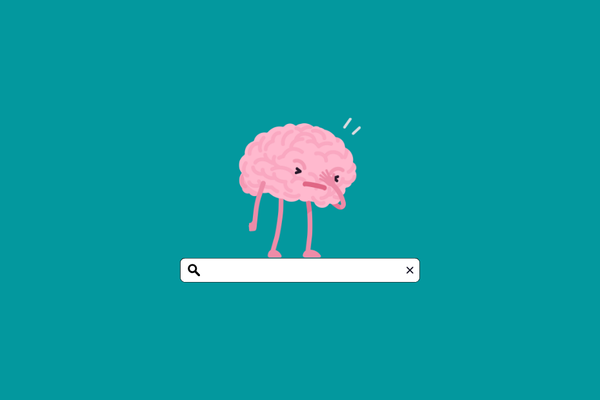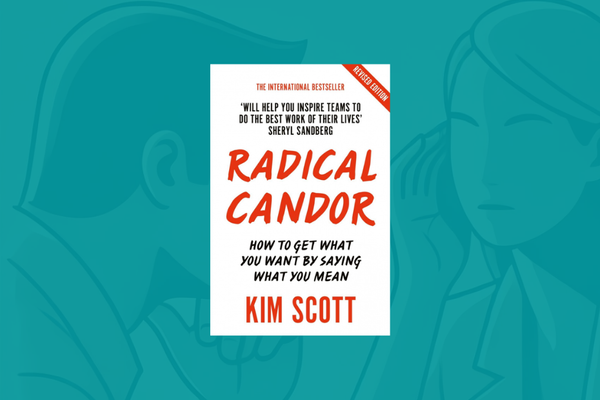How to create a mind map? Softwares, templates and tips
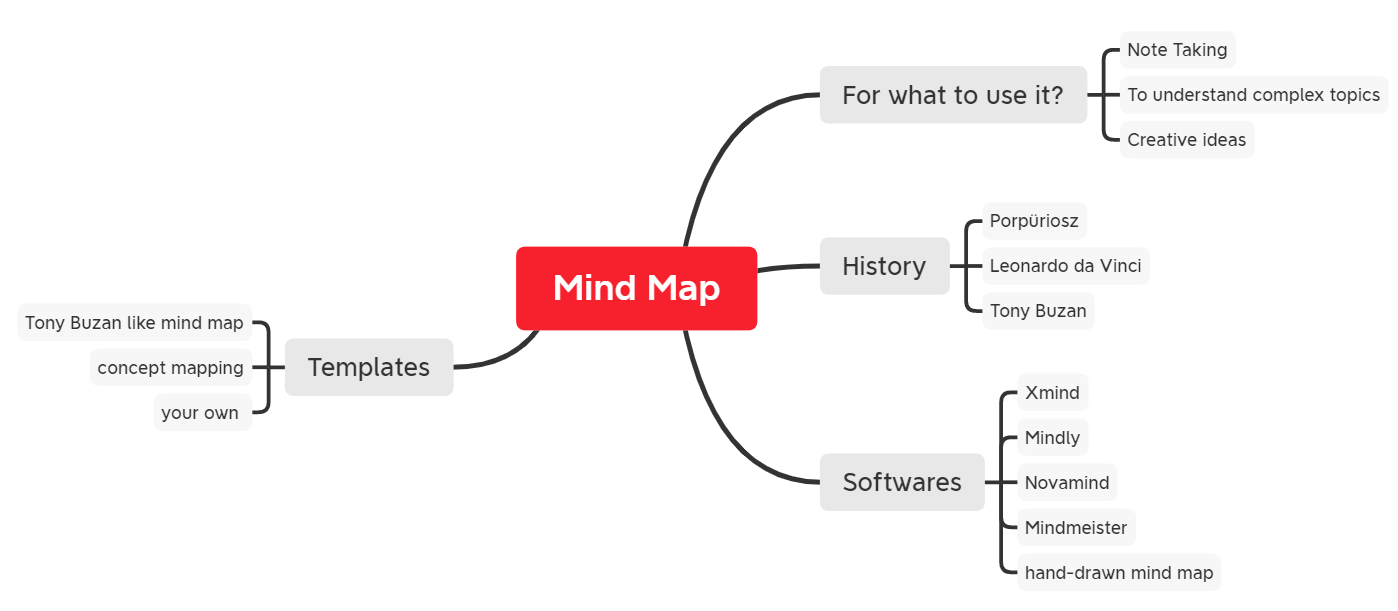
You find a cozy spot in the middle rows of benches. You prepare your notebook and a bunch of pens and then start writing devotedly. Every word is important because what is said can occur in the exam. With 5 full A4 sheets in your bag, you are proud of yourself.
You have every resource for a successful exam since you made such good notes. The only thing left is to memorize your notes.
Before the exam, you read your notes a thousand times and you know: you're ready. You will pass the exam.
The method works more or less when studying for tests.
- But what happens if the next exam builds on the previous one?
- What happens if you not only take an exam but also want to apply what you hear?
- What other alternatives do you have to master the material?
Anyone who has stumbled upon a course in learning methodology, or has procrastinated by browsing Pinterest for colorful learning inspiration, may be familiar with the concept of a mind map.
What is a mind map?
A mind map is a tool that helps to visually display information to deepen its understanding and memorize it more effectively by structuring and organizing the set of knowledge to be acquired.
It can be used for brainstorming, taking notes, helping to solve problems effectively, and recall visualized information more easily.
By creating a mind map, we become able to bridge the gap between logical and creative thoughts seamlessly, and with the mind map, we acquire the set of information that is the subject of our learning more professionally and effectively.
Who created the first map?
Many attributes the format of the mind map known today to British writer Tony Buzan. Buzan in the Use Your Head BBC series described the then (1974) lesser-known and rarely used technique. However, the mind map is not Buzan’s invention but dates back to much earlier times.
The teachings of Aristotle were summarized in the 3rd century by the ancient Greek philosopher Porphyrios with a mind map. Early thinkers also liked to draw pictures, where they depicted the connections between related words and ideas.
Historians believe Leonardo da Vinci also used a mind map, primarily when taking notes.
Does mind mapping work?
No matter how mysterious mind map gurus are if they want to convince ourselves about the effectiveness of a more inconvenient and time-consuming method than traditional note-taking, we need evidence.
Although Tony Buzan says memorizing with a mind map he can recall 30-40% more information than traditional note-taking, this has not been proven outside of his own “experiments”.
Several scientific experiments have come to the disappointing conclusion that there is no significant difference between the exam scores of students studying with traditional methods and those with a memory map.
However, the results of this experiment in 2005 were supplemented by several important remarks by Glennis Edge Cunningham.
According to Cunningham, the effectiveness of a mind map cannot be properly examined in a short period of time. For someone to master the ability to make mind maps in a way that they can be done quickly, highlighting only the essential elements, following their own line of thought, it is necessary to make up to 100 mind maps.
Almost none of the research meets this requirement.
However, there are encouraging results either.
In a study of self-study students in Nigeria, students who actively used a mind map produced better test scores in the long run than members of the control group. It is also surprising to conclude that mind map users have become more motivated to master the material and continue their studies.
Although the effectiveness of a mind map cannot be clearly demonstrated by scientific results, the principles behind the system are similar in many ways to the methods used by memory masters, which is why Joshua Foer (2006 winner of the American Memory Championship) recommends the use of mind maps in his book.
Benefits of using a mind map
- Helps to memorize and understand information.
- It helps to see the subject of learning in context.
- It helps to break down the information to be learned into smaller elements that are easier to memorize.
- Improves the ability to recall small details.
- It makes you use your imagination and helps you come up with creative ideas.
- It helps maintain your attention while learning.
- Helps you take more detailed and organized notes.
- It plays on learning and arranging what has been learned, thus maintaining your interest in the material to be learned.
- Improves your problem-solving skills.
- It helps to discover hitherto unknown connections between the elements learned.
Mind mapping softwares
Encouraged by the efficiency of the learning method, mind mapping is growing like mushrooms. While a handwritten / drawn mind map is a perfect solution in most cases, software complements the shortcomings of the paper solution quite well.
It is worth testing programs that can save your mind maps, you can edite later them, and share them with others. Also, images and links can be inserted with these software, as they are often more convenient for creating a more detailed mind map.
I’ve tried several mind mapping programs in recent years, and for the sake of writing this article, I’ve examined the best ones more closely. There are many more programs on the Internet than those listed, I tried to look at the programs with different functions, and even free alternatives.
1. Novamind
The desktop application is easy to use, it knows everything a mind mapping program needs to know. Novamind is free for up to 25 items, which is fairly easy to achieve. I could only plot a slice of my mind map from the book The President is Missing with the software.
Unfortunately, complex topics, books, and exam papers often exceed the limits of the free version, while there are several better alternatives to the program among paid software.
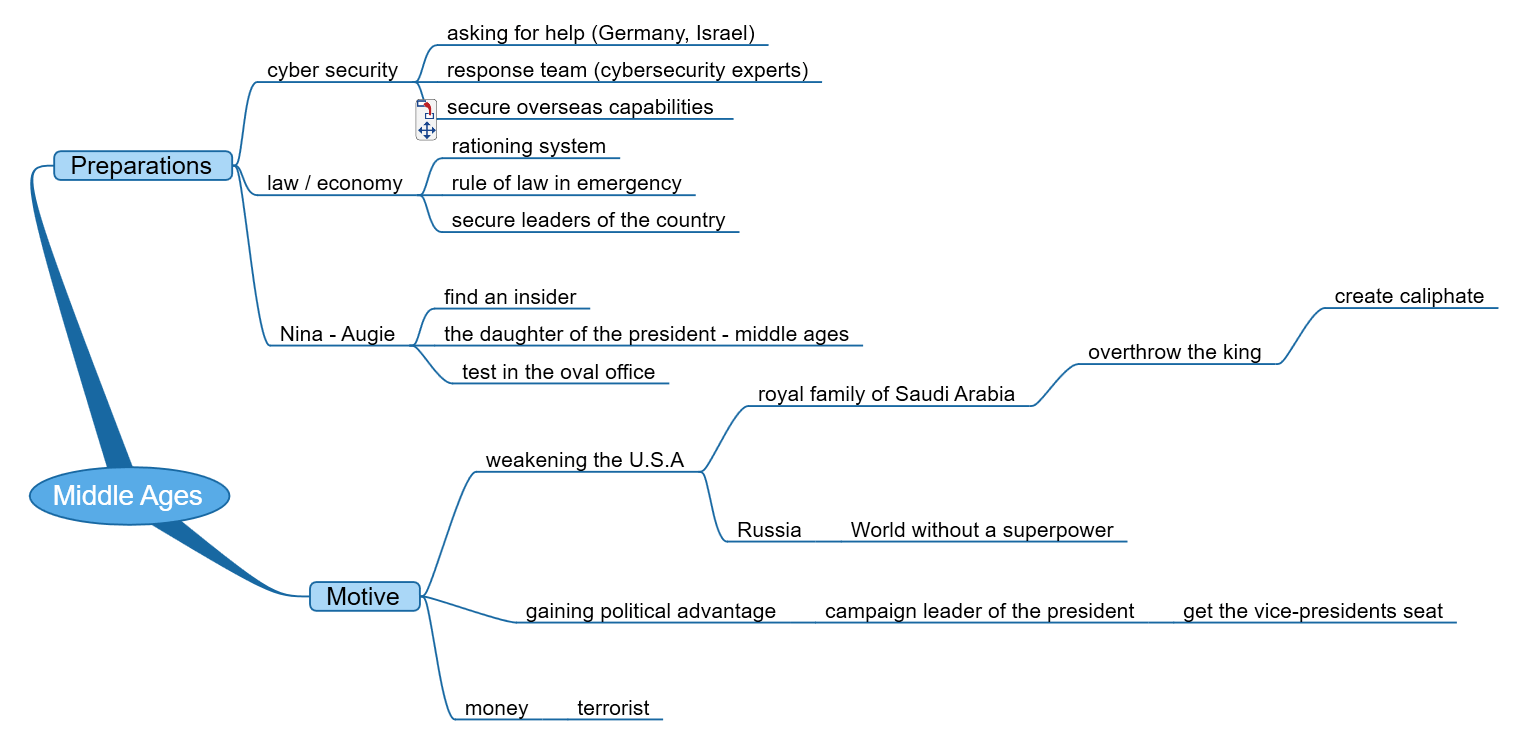
2. Mindmeister
Mindmeister is a complex web app whose creators paid attention to every little detail of the mind map and incorporated it into the software. In addition to operating with an eye-catching design compared to low-cost desktop programs, the program has several extensions that are rare in the case of other similar software.
It is also possible to insert images and videos with Mindmeister, or with the free version you can convert your files for other mind mapping programs (eg Xmind), and with the paid version you can create PowerPoint and Microsoft Word-friendly mind maps.
It is also worth mentioning the collaborative functions of the program, as we even have the opportunity to discuss ideas by voting on the elements of the mind map, and we can edit the board at the same time.
Up to 3 boards, the free program is a serious competitor among mind mapping programs and you can even visualize an entire book with it.
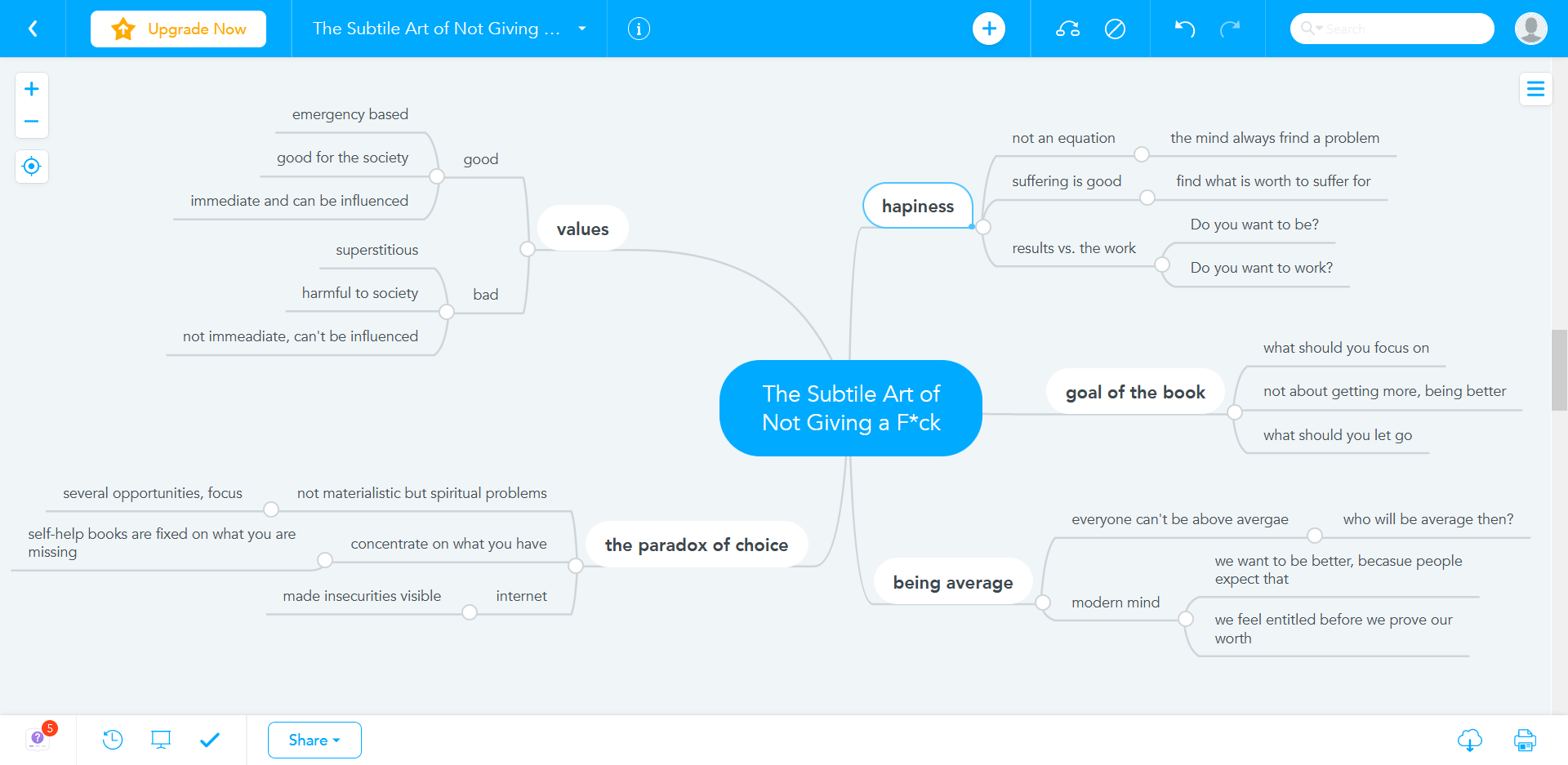
3. Xmind
Built-in mind mapping templates, ideas are included in one of the most beginner-friendly mind mapping programs, Xmind. It can be used on both desktop and mobile devices, it is compatible with almost all operating systems.
With its presentation mode, the created mind maps can be utilized even in lectures.
Evernote integration, sketching, and a myriad of other features have been built into XMind by the software developers that we really benefit from.
The free version (XMind 8) can also be used, while some of the benefits listed require the paid XMind 8 Pro and XMind: ZEN programs.
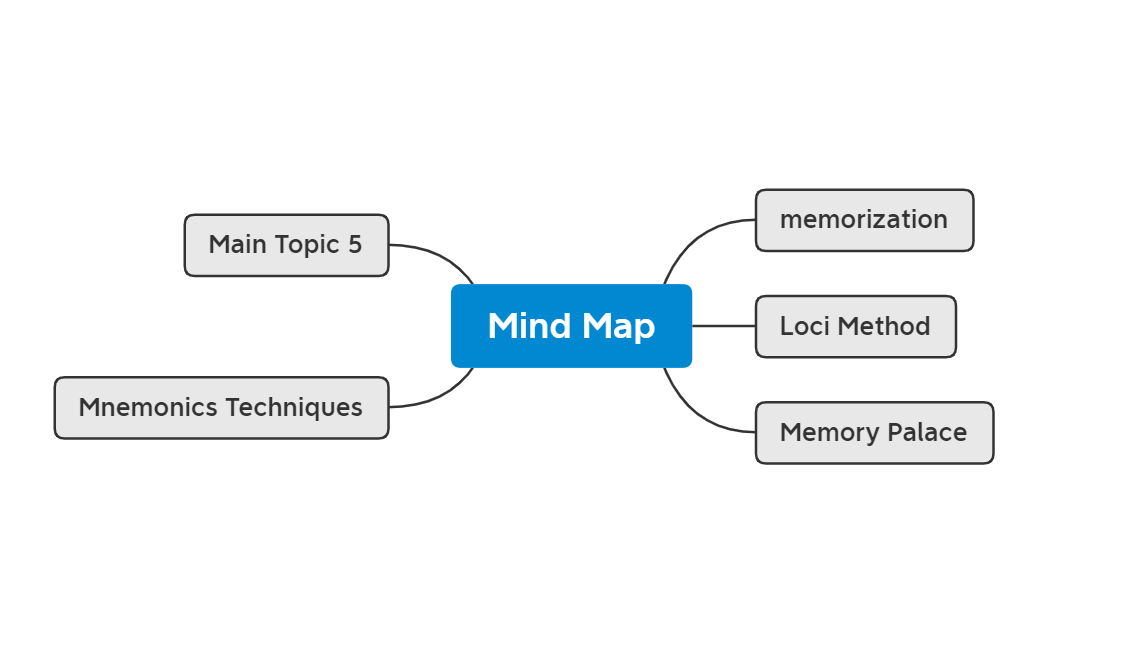
4. Mindly
For notes and shorter mind maps, a mobile-optimized application is especially useful for illustrating our thoughts with simple bubbles. We can also stitch illustrations and links into each bubble, the color of which we can vary to our taste.
With the free version, we can display a limited number of items within a mind map. The lack of a limitation or a paid version can easily lead to a semi-finished mind map.
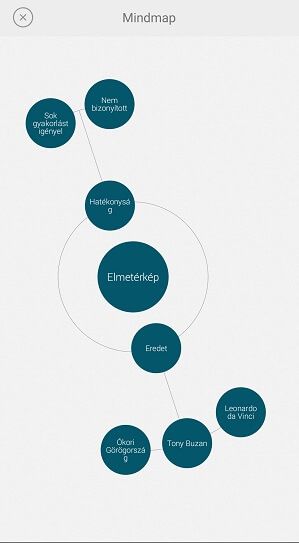
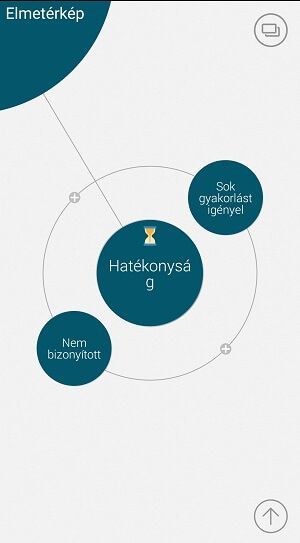
5. Hand-drawn mind map
Hand-made mind maps (as well as pen-and-pencil notes) also have advantages over electronic alternatives. Thinking about the limited capacities of A4 paper and avoiding erasures and strikethroughs, we think twice about whether an element should actually be included in our handwritten mind map.
Thanks to our careful management of space, only the essential elements are included in our final map, while with the software we are free to vary between zoom-in and zoom-out functions.
Tips:
- Make your mind map on a horizontal A4 sheet! We also go from left to right while reading, rather than from top to bottom.
- Keep the central idea in the middle of the page!
- List the possible items in advance and compare the size of the bubbles to the number of items. Fill in the mind sheet!
Mind map template
If you read these lines, you may fairly ask how to get started making a mind map. We know how good it is and we know what software is worth using, and we’ve even figured out how cool it is to make a footprint of our minds by hand.
Let’s finally turn to what tips to take into practice and what patterns to suggest to follow when making a mind map.
Concept mapping
The concept map technique was developed by Cornell University professor Joseph D. Novak in the 1970s.
It is important to distinguish the concept map from the mind map that is the topic of the article, as the concept map allows the representation of relationships between different concepts, while the mind map focuses on a single idea or one concept.
If we create a concept map of the mind map, we represent concepts that are related to the mind map rather than those that characterize it.
In the case of a concept map, the elements of our map can be memorization, the loci method, or the memory palace.
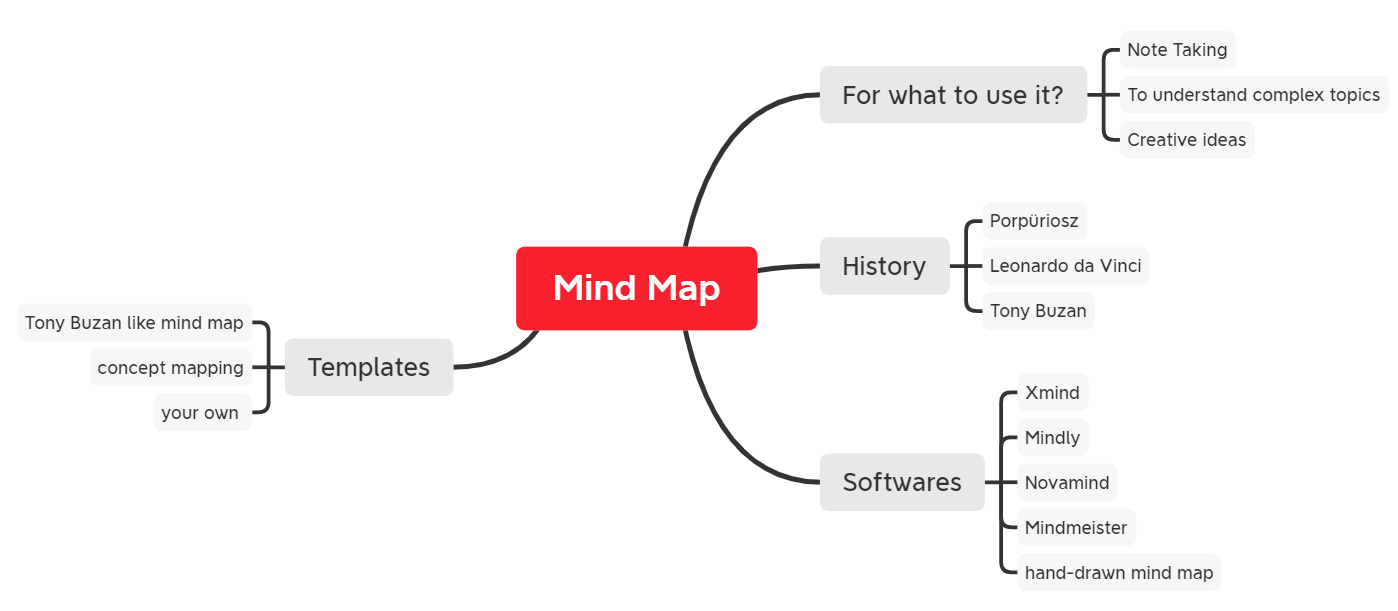
If the vicious ideas come to mind to mind map mind maps prepare, we could find a more favorable to expand the concept elements DIAGRAM components such as consumption, templates, software.
Tony Buzan's mind map
The 20th-century concept of the mind map was fundamentally transformed by Tony Buzan, who, contrary to his claims, was not the inventor of the mind map, but with his developments, he helped a lot in the widespread and development of the concept.
He wrapped his methods in several documentaries, books, and lectures.
We will now look at the main features of Tony Buzan's mind map:
- Draw a picture in the center of the mind map that illustrates the central theme. Use at least 3 colors.
- Use pictures, illustrations, symbols.
- Use more colors on the mind map. Multiple colors help group similar items.
- Choose keywords and differentiate between uppercase and lowercase letters (the most important idea is all uppercase, the initial idea is lowercase)
- It is best if each word and image is at a unique height or if there is no other thought in its line.
- These lines are worth connecting, starting with the central image. The lines should be thicker than the center and then taper continuously towards the edges of the element map.
- Let the lines be as long as the elements you want to connect.
- Mark the importance of elements (darker color, capital letter) and the connections between them (lines)!
- Use a circular mind map or follow the tree branch structure.
- Experiment and develop your own mind map type!
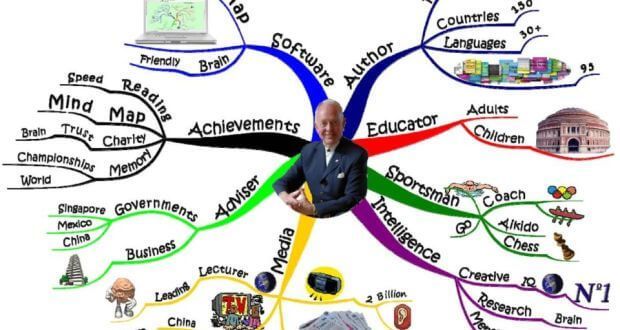
More mind mapping tips
Don't think too much!
Even without colored bubbles, bold lines, and artistic illustrations, a mind map is a valuable tool. Moreover, instead of today’s sometimes overly Pinterest-ready mind maps, it’s worth focusing on the real features of the tool:
- Structure and the ability to process information are what really matter, and you can practice that without colored pencils.
Every mind map is different and that’s good.
It is not only in the form of the figures, the colors used, or the different line thicknesses that our mind maps differ from others. Because we are all unique, our train of thought is incomparable, so the document that organizes our thoughts will be different in content.
We consider other elements important on the same topic, as our prior knowledge is also different.
You make the mindmap for yourself.
This is always worth keeping in mind.
Central thought and subtopics
Selecting the main topic in the middle of the mind map is usually simple. One-word concepts, book and item titles, the title of the lecture. But how do we start from the central idea and choose the specific weight sub-themes?
- Ask questions about the central idea. For example, in the mind map concept, is the When question answered by the resources and the Why question by the usage of subtopics.
- Follow the structure of the book/lecture. When we write or give a lecture, most of the time we try to create it based on a logical structure. In books, we organize related ideas into chapters, while in a lecture, the student’s articulation and headlines can reveal the subtopics discussed. It is also useful to use this information, which seems obvious at first, to create our mind map.
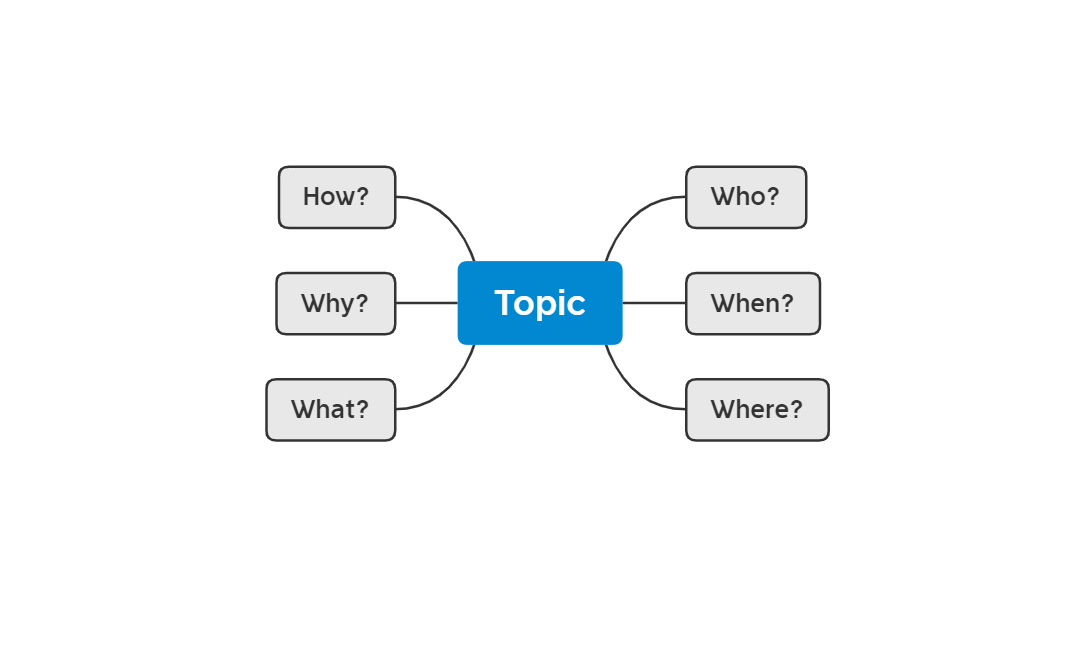
Think, don't document!
- How do the described elements fit together?
- How will you remember them later?
- Is the mind map clear to you or just an opaque mass?
When taking notes, we tend to write down every word that is spoken, but this can be counterproductive when creating a mind map.
Thus, it is difficult to find logical connections between the elements and the benefits of the tool disappear.
When making a mind map, pay attention to the connections between thoughts, not just blindly document them!
What's next?
First, don’t get lost in the plethora of mind mapping programs.
I think a handwritten mind map is perfectly enough, if not better than its software counterparts. The programs are in favor of giving them more freedom in deleting items, inserting images and complete diagrams, and not getting lost, unlike our maps written on paper.
The mind map is a useful learning tool, but its effective use requires practice.
Don’t be discouraged if you see the mind map as a waste of time rather than an effective learning method when drawing your first few maps. This is a common phenomenon, but with practice, you will be able to make mind maps faster and better.


